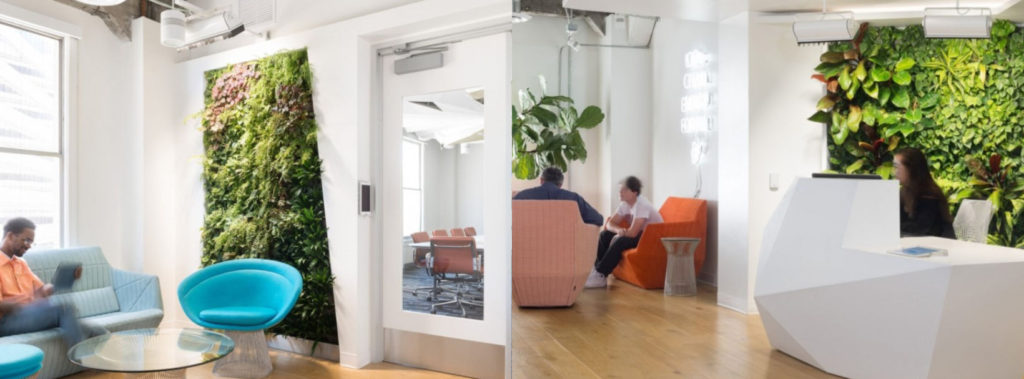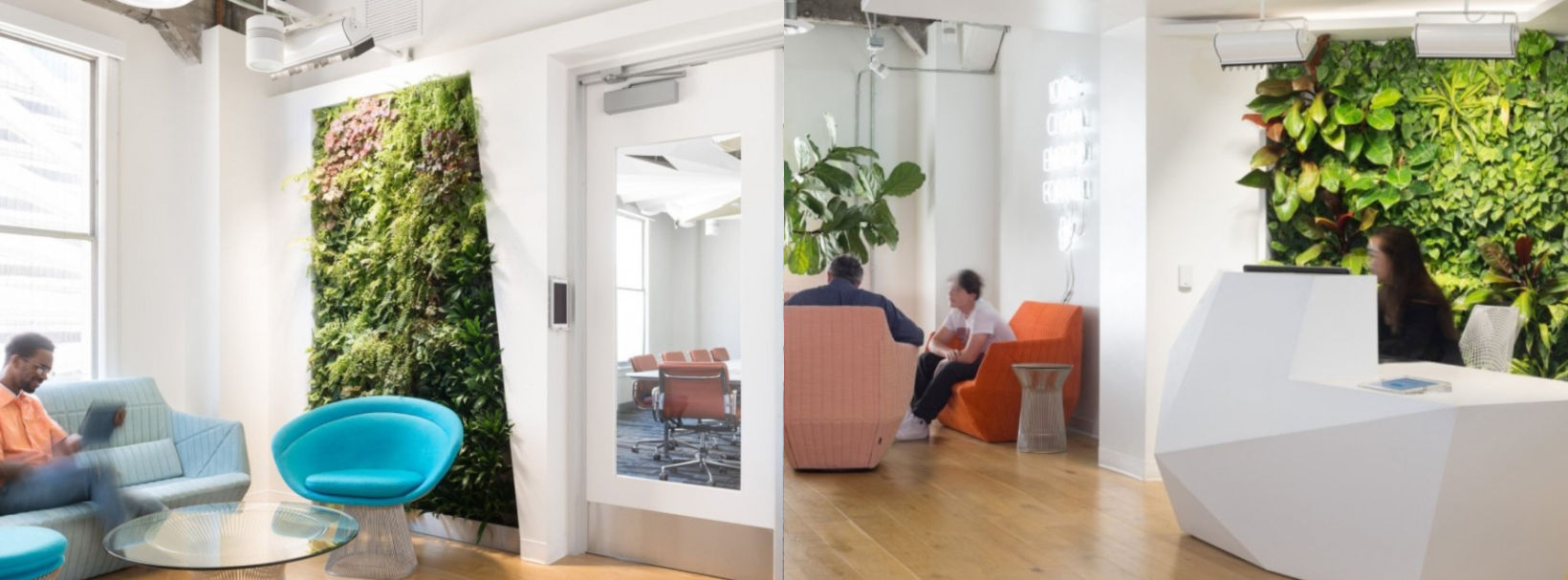
Biophilic Design Inspiration at the Joany’s Office Credit to Office Snapshots
Massive windows with sunlight bursting through. Mixtures of wood and concrete natural flooring weave through the space. A green wall makes the statement in the room. Spaces seem to form naturally with the use of furniture. Gentle music seems to softly play in the background and is that a water fall I hear?
Hey there, sorry for the long intro from Miss Hopes & Dreams, but my name is Reality and I’ll be taking over from here. Small office in desperate need of a new look limited on budget, it’s a scenario that’s often been set. Don’t worry we got you: here’s 5 simple steps to incorporate biophilic design into your office, emphasis on simple and budget friendly.
1. Light is your best friend
The first step to bringing nature in is to make use of natural light. Uncover any windows you might have and let nature light come in. Did you know artificial light has a negative effect on employees through eye strain, eye fatigue, and headaches?
If you don’t have any windows, use natural colored lighting. Avoid white lighting and use warmer hues to mimic that of nature’s sunlight.
2. Watch colors and shapes
Use colors of nature to inspire your design color palette. Splashes of color should be intentional and spontaneous, imitating the surprise of nature’s landscape.
Shapes define your space. Make a practice of using soft shapes to mimic the randomness in nature. Like the splashes of color, watch hard angles and use them thoughtfully with a purpose.
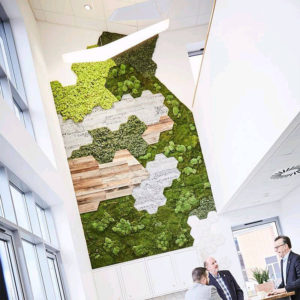
3. Go green
Start incorporating nature simply. Add a plant here and there. Use maintenance friendly varieties to keep replacement and upkeep down. No maintenance more your thing? Try moss panels, easy to mount, easy to create a stellar design, and no maintenance and upkeep. Moss is also a great way to incorporate nature without taking up floor space.
4. Texture is key
Nature is so much more than greenery and plants. Rock, sand, water, and wood are all great textures to enhance a room’s feel. Marble or granite can seem unfriendly and detached, but combined with a moss or plant vibe, it’s vibe-y and sleek. Wood is a great warm natural texture to add to any space. Even fabric materials can make the difference in integrating biophilic design. Avoid synthetics and plastics and search for natural fibers for your textiles.
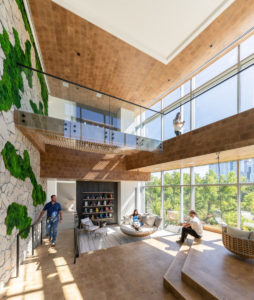
5. Rearrange the office, understanding the nature of space
Understanding the nature of space is understanding the intrinsic desires of humans. It’s looking at the science behind design. Try to rearrange your office to include the following space definers.
a. Prospect
Seeing beyond our immediate surroundings, a big view picture of the space.
Examples: balconies, open plan spaces, skylights, oversized windows
b. Refuge
Ability to look over your surroundings from the safety of a protected position.
Examples: Acoustic pod within an open plan office
c. Mystery
The unknown in design, the promise of surprise, the anticipation of something more.
Examples: Design leaving us to wonder, what’s around the corner?
d. Risk/ Peril
Thrill of danger from a place of safety.
Examples: High walkway, glass wall
For the full guide on the nature of space, read more here.
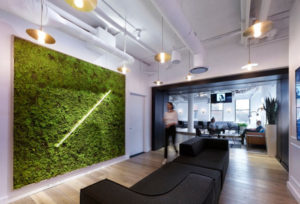
Biophilic design doesn’t have to be a complex process to incorporate. It doesn’t take much to create a mission to slowly work on bringing nature indoors.
Just remember:
LIGHT, SHAPE, GREEN, TEXTURE, SPACE
“Make it simple, but significant.”
–Don Draper

